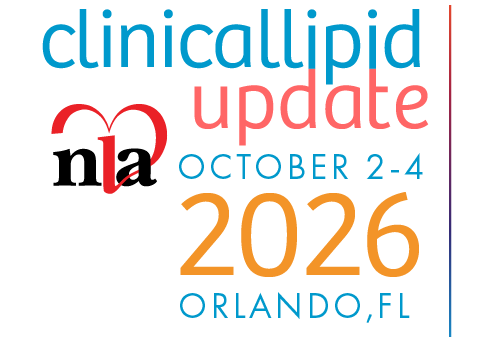Fabry’s Disease and Morquio A syndrome are two rare genetic diseases that lead to a diverse series of problems including cardiovascular.(1,30) Until recently, treatment options have been limited to treat these conditions. Now that there are available therapies to help improve quality and quantity of life, (20,46) it is important to be able to recognize these conditions in clinical practice to help initiate treatment earlier. The goal of this “Practical Pearl” is to help identify these conditions earlier to help improve patient outcomes.
Mucopolysaccharidoses (MPA) type IV A, also known as Morquio A syndrome, is an autosomal recessive inherited deficiency of the lysosomal enzyme N-acetylegalactosamine-6-sulphate sulphatase (GALNS). The syndrome is characterized by the accumulation of keratan sulphate and chondroitin-6-sulphate.(1,2) The presentation ranges from mild to severe phenotypes due to over 220 mutations linked to the GALNS gene on chromosome 16q24.3.(3-5) Given its rarity, it is common for diagnosis to be delayed or missed with reported incidence ranging from 1 in 76,000 to 1 in 640,000 live births.(6-8)
Infants usually appear normal at birth and develop signs and symptoms over time due to the accumulation of glycosaminoglycans in organs. The condition is characterized by skeletal dysplasia. Findings include
a short stature, odontoid hypoplasia, cervical spinal cord compression, pectus carinatum, abnormal gait, hypermobile joints, genu valga, platyspondyly, kyphoscoliosis, thickened heart valves and preserved intellect.(9-14) Left ventricular hypertrophy is associated with a decrease in stroke volume and compensatory higher resting heart rates, which should be allowed to remain elevated to help preserve cardiac output.(15) Spinal cord injury and respiratory failure result in significant mortality with patients often becoming wheelchair dependent in the second decade and not surviving past the third decade of life.(16,17) Given the progressive nature of the disease, early referral to a genetic center for definitive diagnosis is crucial in optimizing patient outcomes. Enzyme activity testing in dried blood and urinary glycosaminoglycan testing may serve as screening tools but definitive diagnosis is by demonstration of reduced GALNS activity in fibroblasts or leukocytes. In cases with strong clinical suspicion for the disease but inconclusive enzyme results, molecular analysis clinches the diagnosis.(15,18)
Until recently, treatment for Morquio A syndrome was supportive and symptom-driven. However, the approval of enzyme replacement therapy with elosulfase alpha, a recombinant human GALNS administered as weekly infusions, has proven to be effective with a favorable safety profile. Treatment should be implemented as soon as diagnosis is confirmed.(15,19-21) Valve replacement surgery may be considered per standard guidelines.(22,23) Anesthesia for surgery should be carried out by an anesthesiologist familiar with the disease as deposition of mucopolysaccharides in the oro-pharynx complicates intubation and atlanto-axial instability raises the risk of subluxation and quadriparesis.(24)
Fabry’s disease is an X-linked lysosomal storage disorder caused by the deposition of globotriaosylceramide (ceramide trihexoside), a lipid material, throughout the body. This is due to deficiency of the enzyme alpha-galactosidase.(25,26) Males are more commonly and severely affected than females who usually manifest at a later age.(27) Carrier females may remain asymptomatic or manifest as full-blown disease.(28) The incidence of the classic manifestation of Fabry’s disease is reported to be 1:22,000 to 1:40,000 in males.(29-31) Glycosphingolipid accumulation in vascular endothelium results in ischemia and infarction (systemic, but uniquely effects the renal vasculature) culminating in early death.
Signs and symptoms may appear in childhood or adolescence and include acroparesthesias (pain in the extremities), “Fabry’s crises” of episodic acute pain, characteristic angiokeratomas on the skin with hypohydrosis, intolerance to extremes of temperature and proteinuria.(32-34) These patients develop left ventricular hypertrophy, valvular and coronary artery disease, arrhythmias, ascending aortic aneurysms and heart failure.(35-37) Progressive renal ischemia and dysfunction lead to dialysis dependence by the fifth decade of life.(38)
Given the spectrum of manifestations, diagnosis is often delayed. Clues to diagnosis include renal failure, cardiomyopathy with left ventricular hypertrophy, arrhythmias, heat intolerance, corneal opacities, obstructive pulmonary disease and hearing loss.(39) Initial testing includes obtaining a a-Gal A enzyme level, which if markedly deficient or absent in a male patient is diagnostic. Female carriers may have a normal a-Gal A assay and thus should undergo molecular testing.(40) Once diagnosis is established, referral to a genetic counselor should be made to educate the patient on the course of the disease, its inheritance and treatment options including enzyme replacement therapy. Prenatal testing for a-Gal A activity can be performed on cultured amniocytes or chorionic villi.(41)
“Before the development of enzyme replacement therapy (ERT), the management of Fabry’s disease was supportive and symptom-driven.”
Before the development of enzyme replacement therapy (ERT), the management of Fabry’s disease was supportive and symptom-driven. Blood pressure control is essential to reduce cardiovascular, renal and cerebrovascular disease. Given there is evidence to support this is a prothrombotic state, anti-platelet agents can be considered.(42) Pain is usually the earliest manifestation and is refractory to non-steroidal anti-inflammatory agents, which may conversely hasten renal dysfunction.(43,44) Renal failure is the most common cause of death in classic Fabry’s disease and dialysis or renal transplant can prolong life. Transplanted kidneys do not develop the disease.(45)
Enzyme replacement therapy in Fabry’s disease is an area of active research. Therapy should be initiated as soon as the diagnosis has been established. Two preparations of human a-Gal A are available – gene-activated human a-Gal
A (Replagal) and recombinant human a-Gal A (Fabrazyme). Both proteins have been found to be similar in structure, tolerability and activity.(46) The goal of treatment with ERT is to halt progression of the disease. Early trial data has been encouraging and clinical experience with Gaucher’s disease supports this.(47,48) The availability of ERT has put a new focus on the prompt recognition and diagnosis of Fabry’s disease.
In summary, these are two rare conditions related to abnormal accumulation of material related to enzyme deficiencies. We should be aware of these conditions and the features that can prompt an earlier diagnosis. We now have treatments beyond supportive care that show promise in treating these conditions, which makes earlier diagnosis and intervention even more important.
Disclosure statement: Dr. Shetty has no financial disclosures to report. Dr. Davidson has received honoraria from Amgen, Sanofi, Regeneron, Akcea, and Esperion.
REFERENCES
1. Northover H, Cowie RA, Wraith JE. Mucopolysaccharidosis type IVA (Morquio syndrome): a clinical review. Journal of inherited metabolic disease. 1996;19(3):357-365.
2. Tomatsu S, Yasuda E, Patel P, et al. Morquio A syndrome: diagnosis and current and future therapies. Pediatric endocrinology reviews: PER. 2014;12 Suppl 1:141-151.
3. Tomatsu S, Fukuda, S., Masue, M., Sukegawa, K., Masuno, M., Orii, T. Mucopolysaccharidosis type IVA: characterization and chromosomal localization of N-acetylgalactosamine-6-sulfate sulfatase gene and genetic heterogeneity. Am J Hum Genet.
1992;51.
4. Fukuda S, Tomatsu S, Masue M, et al. Mucopolysaccharidosis type IVA. N-acetylgalactosamine-6-sulfate sulfatase exonic point mutations in classical Morquio and mild cases. The Journal of clinical investigation. 1992;90(3):1049-1053.
5. Morrone A, Tylee KL, Al-Sayed M, et al. Molecular testing of 163 patients with Morquio A (Mucopolysaccharidosis IVA) identifies 39 novel GALNS mutations. Mol Genet Metab. 2014;112(2):160-170.
6. Nelson J. Incidence of the mucopolysaccharidoses in Northern Ireland. Human genetics. 1997;101(3):355-358.
7. Nelson J, Crowhurst J, Carey B, Greed L. Incidence of the mucopolysaccharidoses in Western Australia. American journal of medical genetics Part A. 2003;123a(3):310-313.
8. Leadley RM, Lang S, Misso K, et al. A systematic review of the prevalence of Morquio A syndrome: challenges for study reporting in rare diseases. Orphanet journal of rare diseases. 2014;9:173.
9. Montano AM, Tomatsu S, Gottesman GS, Smith M, Orii T. International Morquio A Registry: clinical manifestation and natural course of Morquio A disease. Journal of inherited metabolic disease. 2007;30(2):165-174.
10. Tomatsu S, Montano AM, Oikawa H, et al. Mucopolysaccharidosis type IVA (Morquio A disease): clinical review and current treatment. Current pharmaceutical biotechnology. 2011;12(6):931-945.
11. Hendriksz CJ, Al-Jawad M, Berger KI, et al. Clinical overview and treatment options for non-skeletal manifestations of mucopolysaccharidosis type IVA. Journal of inherited metabolic disease. 2013;36(2):309-322.
12. Davison JE, Kearney S, Horton J, Foster K, Peet AC, Hendriksz CJ. Intellectual and neurological functioning in Morquio syndrome (MPS IVa). Journal of inherited metabolic disease. 2013;36(2):323-328.
13. Wraith JE. The mucopolysaccharidoses: a clinical review and guide to management. Arch Dis Child. 1995;72(3):263-267.
14. Latif N, Sarathchandra P, Taylor PM, Antoniw J, Yacoub MH. Localization and pattern of expression of extracellular matrix components in human heart valves. The Journal of heart valve disease. 2005;14(2):218-227.
15. Hendriksz CJ, Berger KI, Giugliani R, et al. International guidelines for the management and treatment of Morquio A syndrome. American journal of medical genetics Part A. 2015;167a(1):11-25.
16. Tomatsu S, Mackenzie WG, Theroux MC, et al. Current and emerging treatments and surgical interventions for Morquio A syndrome: a review. Research and reports in endocrine disorders. 2012;2012(2):65-77.
17. Harmatz P, Mengel KE, Giugliani R, et al. The Morquio A Clinical Assessment Program: baseline results illustrating progressive, multisystemic clinical impairments in Morquio A subjects. Mol Genet Metab. 2013;109(1):54-61.
18. Wood TC, Harvey K, Beck M, et al. Diagnosing mucopolysaccharidosis IVA. Journal of inherited metabolic disease. 2013;36(2):293-307.
19. Hendriksz C, Vellodi A, Jones S, et al. Long Term Outcomes of a Phase 1/2, Multicenter, Open-Label, Dose-Escalation Study to Evaluate the Safety, Tolerability, and Efficacy of BMN 110 in Patients with Mucopolysaccharidosis IVA (Morquio A Syndrome). Mol Genet Metab. 2012;105:S35.
20. Hendriksz CJ, Burton B, Fleming TR, et al. Efficacy and safety of enzyme replacement therapy with BMN 110 (elosulfase alfa) for Morquio A syndrome (mucopolysaccharidosis IVA): a phase 3 randomised placebo-controlled study. Journal of inherited metabolic disease. 2014;37(6):979-990.
21. Lyseng-Williamson KA. Elosulfase Alfa: a review of its use in patients with mucopolysaccharidosis type IVA (Morquio A syndrome). BioDrugs : clinical immunotherapeutics, biopharmaceuticals and gene therapy. 2014;28(5):465-475.
22. Nicolini F, Corradi D, Bosio S, Gherli T. Aortic valve replacement in a patient with morquio syndrome. The heart surgery forum. 2008;11(2):E96-98.
23. Pagel PS, Almassi GH. Perioperative implications of Morquio syndrome in a 31-year-old woman undergoing aortic valve replacement. Journal of cardiothoracic and vascular anesthesia. 2009;23(6):855-857.
24. Kadic L, Driessen JJ. General anaesthesia in an adult patient with Morquio syndrom with emphasis on airway issues. Bosn J Basic Med Sci. 2012;12(2):130-133.
25. Brady RO, Gal AE, Bradley RM, Martensson E, Warshaw AL, Laster L. Enzymatic defect in Fabry’s disease. Ceramidetrihexosidase deficiency. The New England journal of medicine. 1967;276(21):1163-1167.
26. Kint JA. Fabry’s disease: alpha-galactosidase deficiency. Science. 1970;167(3922):1268-1269.
27. Wang RY, Lelis A, Mirocha J, Wilcox WR. Heterozygous Fabry women are not just carriers, but have a significant burden of disease and impaired quality of life. Genetics in medicine : official journal of the American College of Medical Genetics. 2007;9(1):34-45.
28. MacDermot KD, Holmes A, Miners AH. Anderson-Fabry disease: clinical manifestations and impact of disease in a cohort of 60 obligate carrier females. Journal of medical genetics.
2001;38(11):769-775.
29. Meikle PJ, Hopwood JJ, Clague AE, Carey WF. Prevalence of lysosomal storage disorders. Jama. 1999;281(3):249-254.
30. Branton MH, Schiffmann R, Sabnis SG, et al. Natural history of Fabry renal disease: influence of alpha-galactosidase A activity and genetic mutations on clinical course. Medicine. 2002;81(2):122-138.
31. Spada M, Pagliardini S, Yasuda M, et al. High incidence of later-onset fabry disease revealed by newborn screening. American journal of human genetics. 2006;79(1):31-40.
32. Colombi A, Kostyal A, Bracher R, Gloor F, Mazzi R, Tholen H. Angiokeratoma corporis diffusum--Fabry’s disease. Helvetica medica acta. 1967;34(1):67-83.
33. MacDermot KD, Holmes A, Miners AH. Anderson-Fabry disease: clinical manifestations and impact of disease in a cohort of 98 hemizygous males. Journal of medical genetics. 2001;38(11):750-760.
34. Desnick RJ, Brady R, Barranger J, et al. Fabry disease, an under-recognized multisystemic disorder: expert recommendations for diagnosis, management, and enzyme replacement therapy. Annals of internal medicine. 2003;138(4):338-346.
35. Linhart A, Lubanda JC, Palecek T, et al. Cardiac manifestations in Fabry disease. Journal of inherited metabolic disease. 2001;24 Suppl 2:75-83; discussion 65.
36. Goldman ME, Cantor R, Schwartz MF, Baker M, Desnick RJ. Echocardiographic abnormalities and disease severity in Fabry’s disease. Journal of the American College of Cardiology. 1986;7(5):1157-1161.
37. Linhart A, Palecek T, Bultas J, et al. New insights in cardiac structural changes in patients with Fabry’s disease. American heart journal. 2000;139(6):1101-1108.
38. Grunfeld JP, Lidove O, Joly D, Barbey F. Renal disease in Fabry patients. Journal of inherited metabolic disease. 2001;24 Suppl 2:71-74; discussion 65.
39. Brown LK, Miller A, Bhuptani A, et al. Pulmonary involvement in Fabry disease. American journal of respiratory and critical care medicine. 1997;155(3):1004-1010.
40. Desnick RJ, Allen KY, Desnick SJ, Raman MK, Bernlohr RW, Krivit W. Fabry’s disease: enzymatic diagnosis of hemizygotes and heterozygotes. Alpha-galactosidase activities in plasma, serum, urine, and leukocytes. The Journal of laboratory and clinical medicine. 1973;81(2):157-171.
41. Brady RO, Uhlendorf BW, Jacobson CB. Fabry’s disease: antenatal detection. Science. 1971;172(3979):174-175.
42. DeGraba T, Azhar S, Dignat-George F, et al. Profile of endothelial and leukocyte activation in Fabry patients. Annals of neurology. 2000;47(2):229-233.
43. Lenoir G, Rivron M, Gubler MC, Dufier JL, Tome FS, Guivarch M. [Fabry’s disease. Carbamazepine therapy in acrodyniform syndrome]. Archives francaises de pediatrie. 1977;34(8):704-716.
44. Lockman LA, Hunninghake DB, Krivit W, Desnick RJ. Relief of pain of Fabry’s disease by diphenylhydantoin. Neurology.
1973;23(8):871-875.
45. Tsakiris D, Simpson HK, Jones EH, et al. Report on management of renale failure in Europe, XXVI, 1995. Rare diseases in renal replacement therapy in the ERA-EDTA Registry. Nephrology, dialysis, transplantation : official publication of the European Dialysis and Transplant Association - European Renal Association. 1996;11 Suppl 7:4-20.
46. Lee K, Jin X, Zhang K, et al. A biochemical and pharmacological comparison of enzyme replacement therapies for the glycolipid storage disorder Fabry disease. Glycobiology. 2003;13(4):305-313.
47. Weinreb NJ, Charrow J, Andersson HC, et al. Effectiveness of enzyme replacement therapy in 1028 patients with type 1 Gaucher disease after 2 to 5 years of treatment: a report from the Gaucher Registry. The American journal of medicine. 2002;113(2):112-119.
48. Mistry PK. Gaucher’s disease: a model for modern management of a genetic disease. Journal of hepatology. 1999;30 Suppl 1:1-5.






.jpg)
.png)












